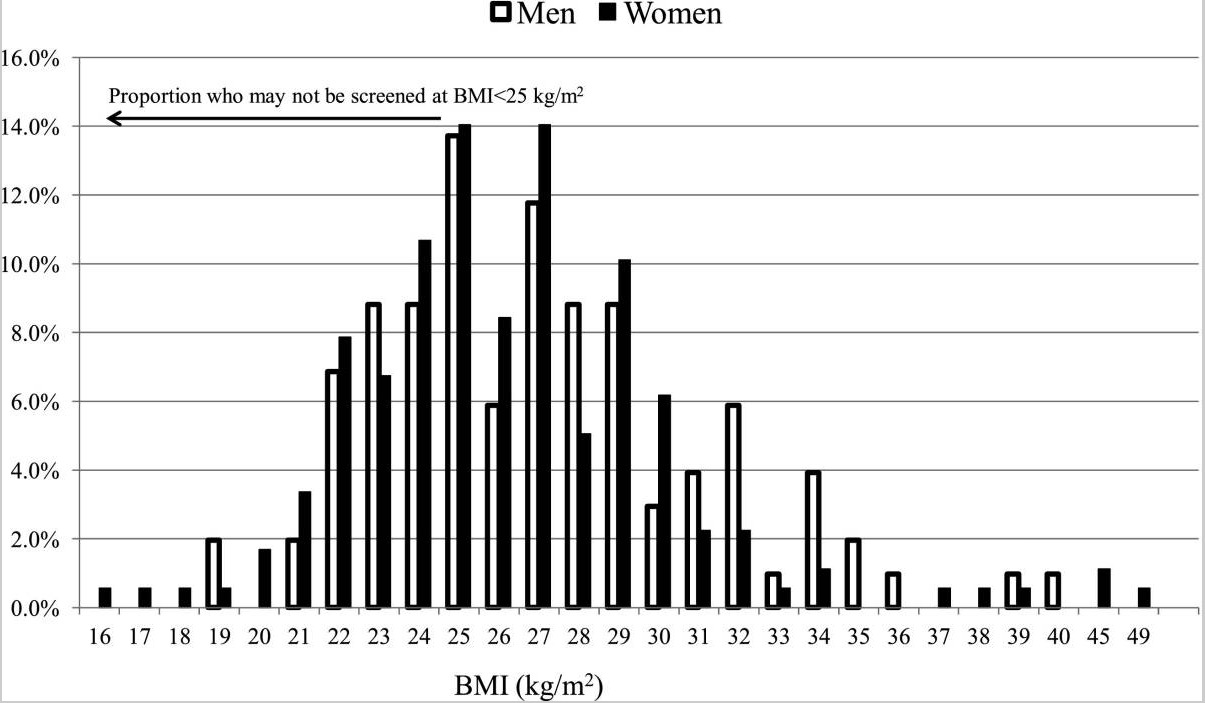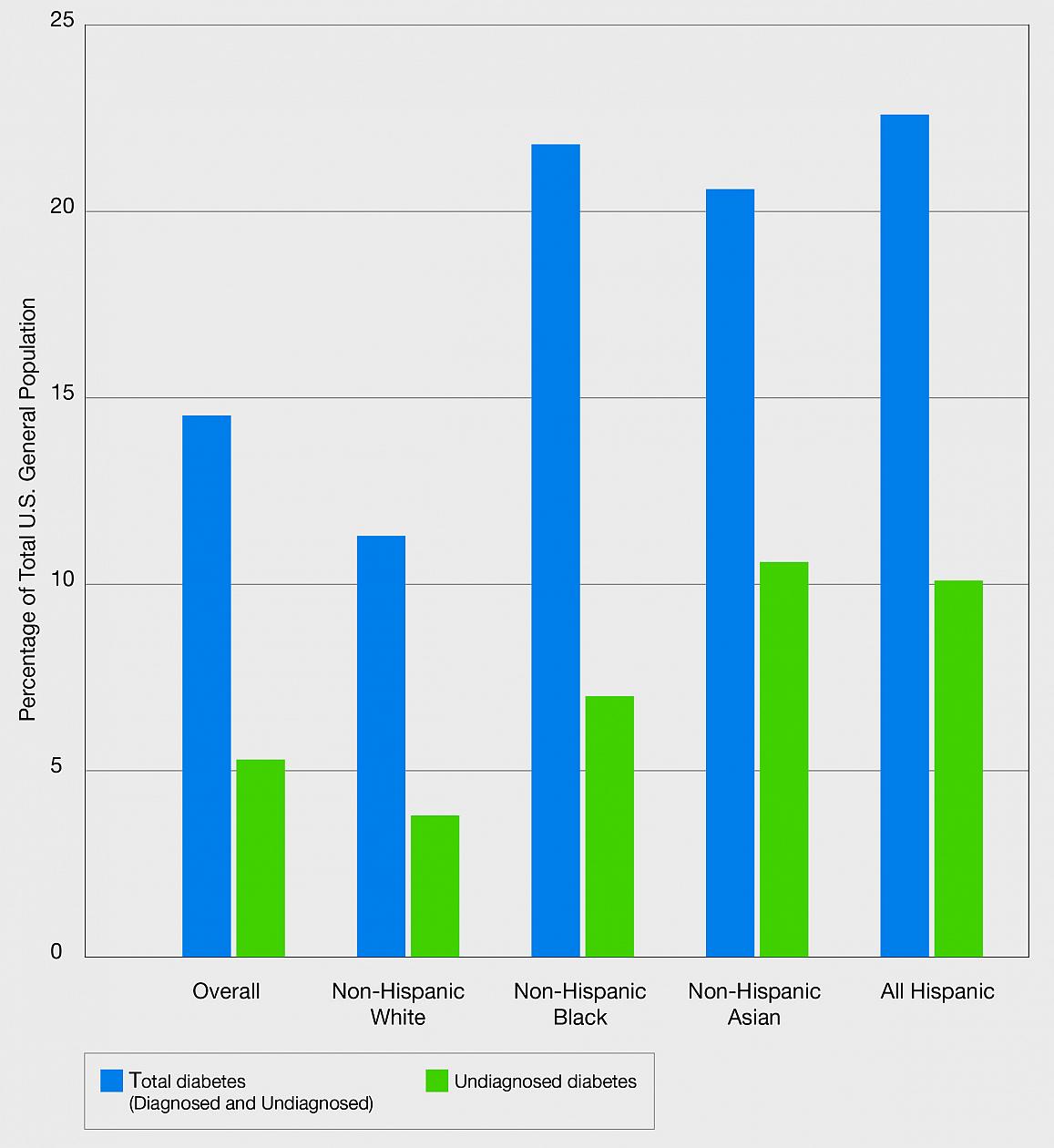A chart from this research paper explains the situation: Optimum BMI cut points to screen asian americans for type 2 diabetes by Araneta et al, Diabetes Care, 2015 May;38(5):814-20.

"Percent distribution of Asian Americans with newly diagnosed type 2 diabetes by BMI." Source: Optimum BMI cut points to screen asian americans for type 2 diabetes by Araneta et al, Diabetes Care, 2015 May;38(5):814-20.
What is Screen at 23? The lowering of diabetes screening threshold from 25 to 23 for Asian Americans is called Screen at 23. Since 2015, several US states have adopted the program.
(2016) Hawaii Resolution for "Screen at 23".
(2016) California Resolution for "Screen at 23" — another copy.
(2018) Massachusetts Resolution for "Screen at 23".
Lancet Editorial: Screening thresholds: one size does not fit all, Editorial, The Lancet Diabetes & Endocrinology, Vol 6, Issue 4, p 259, April 1, 2018.
ADA Position Statement: BMI Cut Points to Identify At-Risk Asian Americans for Type 2 Diabetes Screening, by Hsu, Araneta, Kanaya, Chiang and Fujimoto, Diabetes Care 2015 Jan; 38(1): 150-158.
How are fats distributed in our body? This makes a big difference! A few videos that explain:
An interesting explanation starts at offset 3:28 — why may a slim looking Filipino female (with BMI 23) have higher risk for diabetes as compared to a heavier looking African American female (with BMI 25)? It has to do where the fats on our bodies are! Under the skin or inside our organs (inside our muscles, pancreas, liver, …)?
(7 mins) Transcript. The first 2-3 minutes of this video explain that fat distribution makes a huge difference to our susceptibility for chronic diseases like diabetes.
What is the percentage of undiagnosed diabetes among Asian Americans? Over 50%! See this NIH News Release (2015): More than half of Asian Americans with diabetes are undiagnosed


 Instagram
Instagram YouTube
YouTube